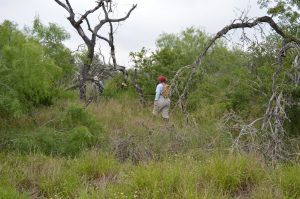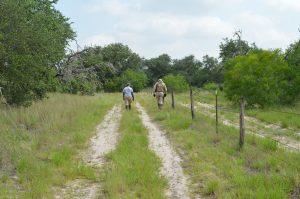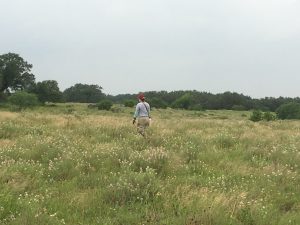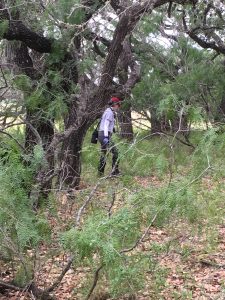The second half of our trip focused on search and recovery operations on local ranches. We were working with Eddie Canales, Arianna & Selina of the South Texas Human Rights Center and Deputy White of the Brooks County Sheriff’s Department. The first day of searching we were joined by a few students from Texas State University. They were able to spend about three hours with us with the goal of collecting data on search coverage using GPS tracking systems. It was a nice opportunity for the UIndy students to interact with their peers in another program and to learn different approaches and techniques for ground searches. The second and third days we focused on a smaller ranch near where Byron’s cousin went missing. Our work became more personal as we searched with him and learned more of his story. He told us about his journey to political asylum in the US, the sadness of not being able to see his family and the pain of loosing his cousin. He summed it up in one simple yet heartbreaking sentence “The life of a migrant is sad.” The pain, the fear, the heartbreak, that does not just go away once you enter the US. It is just transformed into something different yet just as burdensome and heavy.
There were many impactful moments and learning opportunities for the team during this second half of our mission. I asked them each to relay something they learned:
The last few days of our trip have been really impactful for me. Spending time for 3 days straight doing search and recovery on ranches only gave me a glimpse of what it’s like for migrants on a daily basis. But, being around Byron and hearing his story really put my experience into perspective. The three days we spent searching were tough, so to hear that Byron spent two and a half months in conditions similar to and even worse than what we experienced was just heartbreaking. And he went through all of that at the age I am now. There’s no way I could ever be able to handle going through an experience like Byron’s at 24 years old. — Alba

As we walked through the brush there were many pathways heading into the trees. As we followed these pathways in search of evidence or humanity, I realized we were walking the paths of migrants. Paths that were not clear, but instead filled with obstacles throughout the brush. It’s difficult to describe how walking these paths made me feel, but I can say I gained a new perspective and general awe of the migrants and their ambition. — Holley

During our time searching, it really hit me how harsh this environment truly is. There is sand, thorns, stickerburs, animals, tall grass, and more that migrants have to maneuver through, often without any idea of where they are heading. I would imagine this would be even more difficult in the dark, considering just how hard it is in the daylight. It’s incredible that anyone makes it through safely. — Sidney

~KEL
